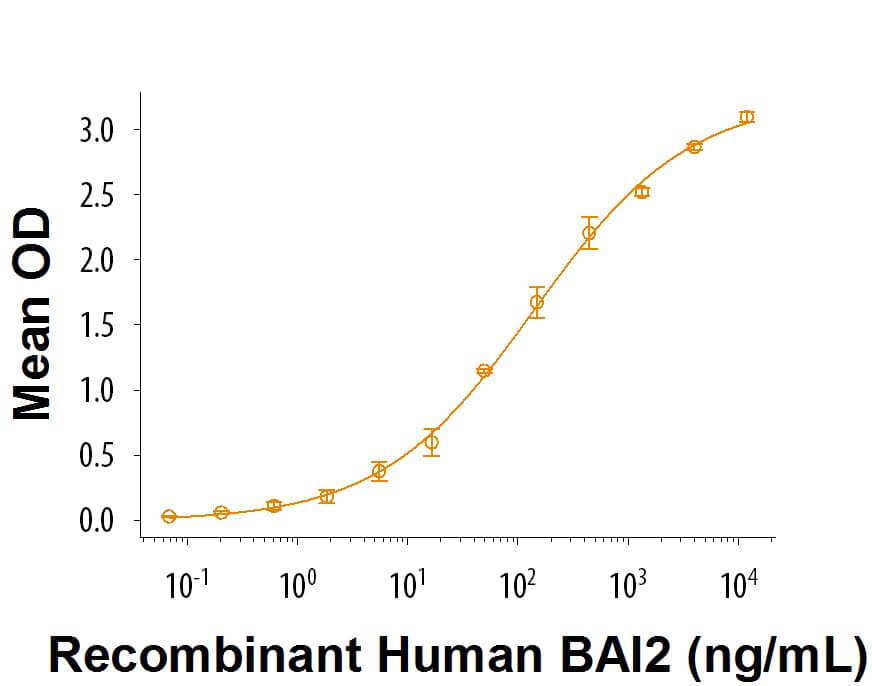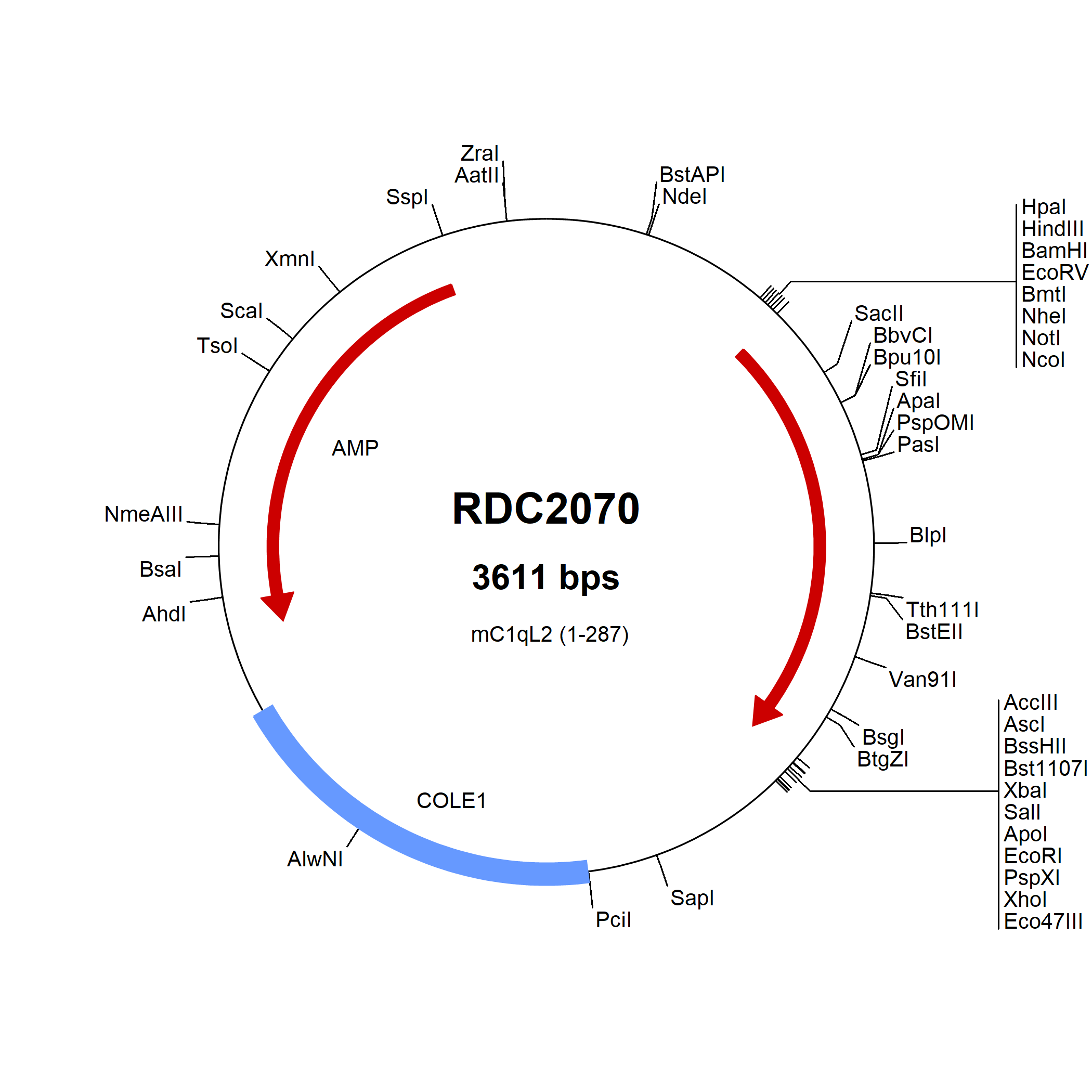C1qTNF10/C1qL2 Products
C1qTNF proteins constitute a highly conserved family of Acrp30/Adiponectin paralogs that share a modular organization comprising an N-terminal signal peptide, a short variable region, a collagenous domain and a C-terminal globular domain. C1qTNF proteins are predicted to have trimeric structures that assemble into hexameric and higher order molecular forms. C1qTNF3, also known as CORS26, is predominantly expressed in cartilage and is induced in mature adipocytes. C1qTNF10, also known as C1qL2, is a protein that shows 28% - 30% sequence identity with C1q subunits A, B, and C. It is predicted to contain one collagen-like and C1q domain. Mouse and human C1qTNF10 share over 90% amino acid sequence identity.
6 results for "C1qTNF10/C1qL2" in Products
6 results for "C1qTNF10/C1qL2" in Products
C1qTNF10/C1qL2 Products
C1qTNF proteins constitute a highly conserved family of Acrp30/Adiponectin paralogs that share a modular organization comprising an N-terminal signal peptide, a short variable region, a collagenous domain and a C-terminal globular domain. C1qTNF proteins are predicted to have trimeric structures that assemble into hexameric and higher order molecular forms. C1qTNF3, also known as CORS26, is predominantly expressed in cartilage and is induced in mature adipocytes. C1qTNF10, also known as C1qL2, is a protein that shows 28% - 30% sequence identity with C1q subunits A, B, and C. It is predicted to contain one collagen-like and C1q domain. Mouse and human C1qTNF10 share over 90% amino acid sequence identity.
| Reactivity: | Mouse |
| Details: | Rat IgG2a Monoclonal Clone #384921 |
| Applications: | WB |
| Source: | E. coli |
| Accession #: | Q7Z5L3 |
| Applications: | BA |
| Reactivity: | Human |
| Details: | Rabbit IgG Polyclonal |
| Applications: | IHC |
| Reactivity: | Human |
| Details: | Rabbit Polyclonal |
| Applications: | WB |




![Western Blot: C1qTNF10/C1qL2 Antibody [NBP2-84549] Western Blot: C1qTNF10/C1qL2 Antibody [NBP2-84549]](https://resources.bio-techne.com/images/products/C1qTNF10-C1qL2-Antibody-Western-Blot-NBP2-84549-img0001.jpg)